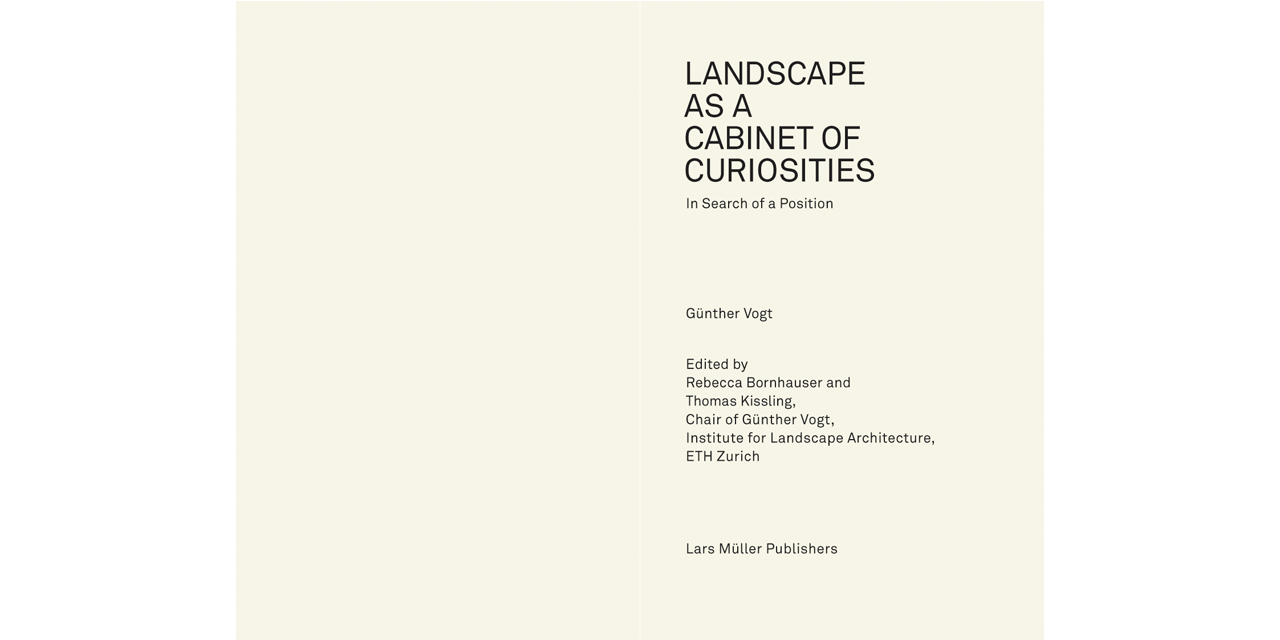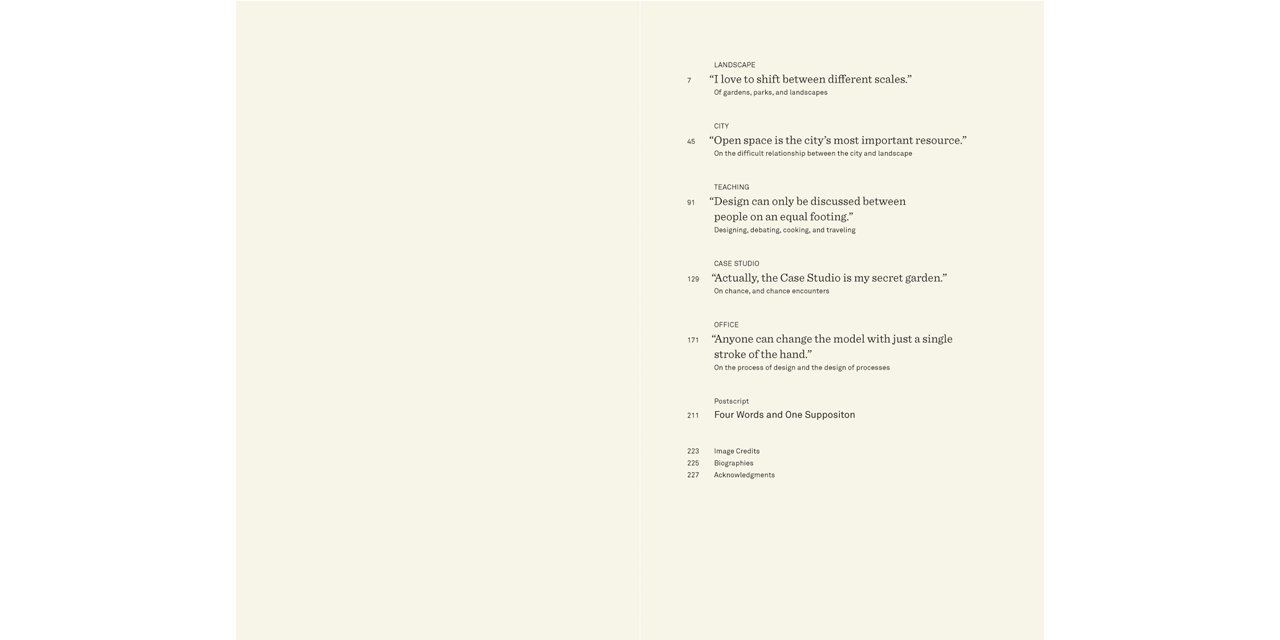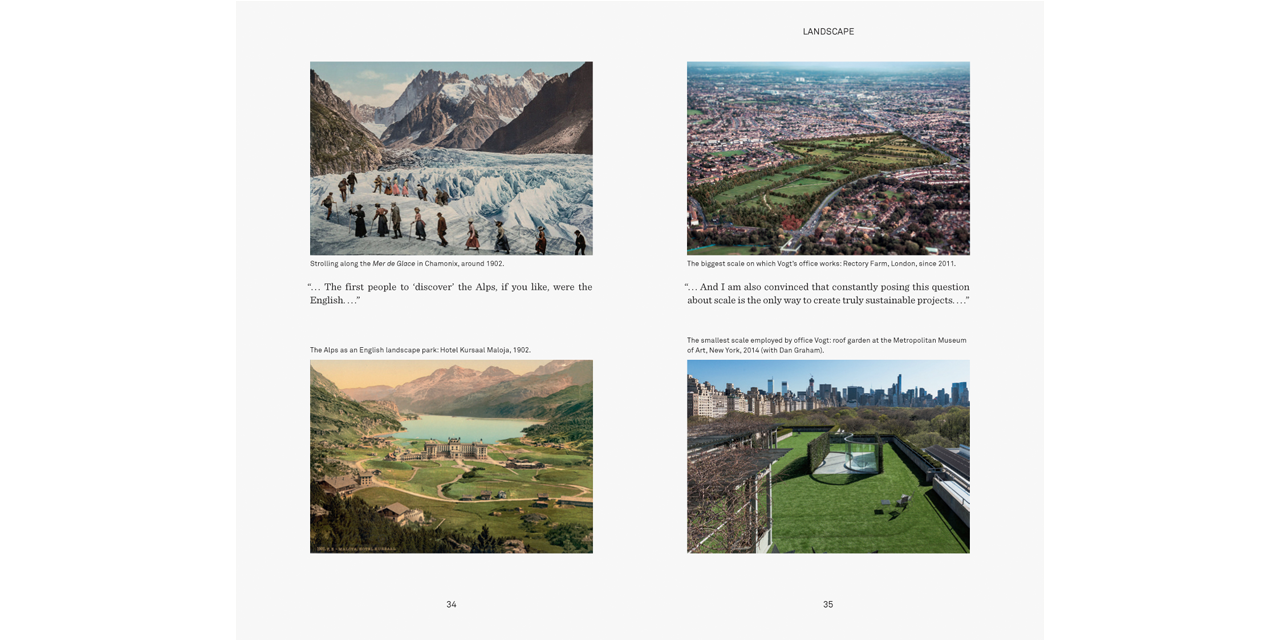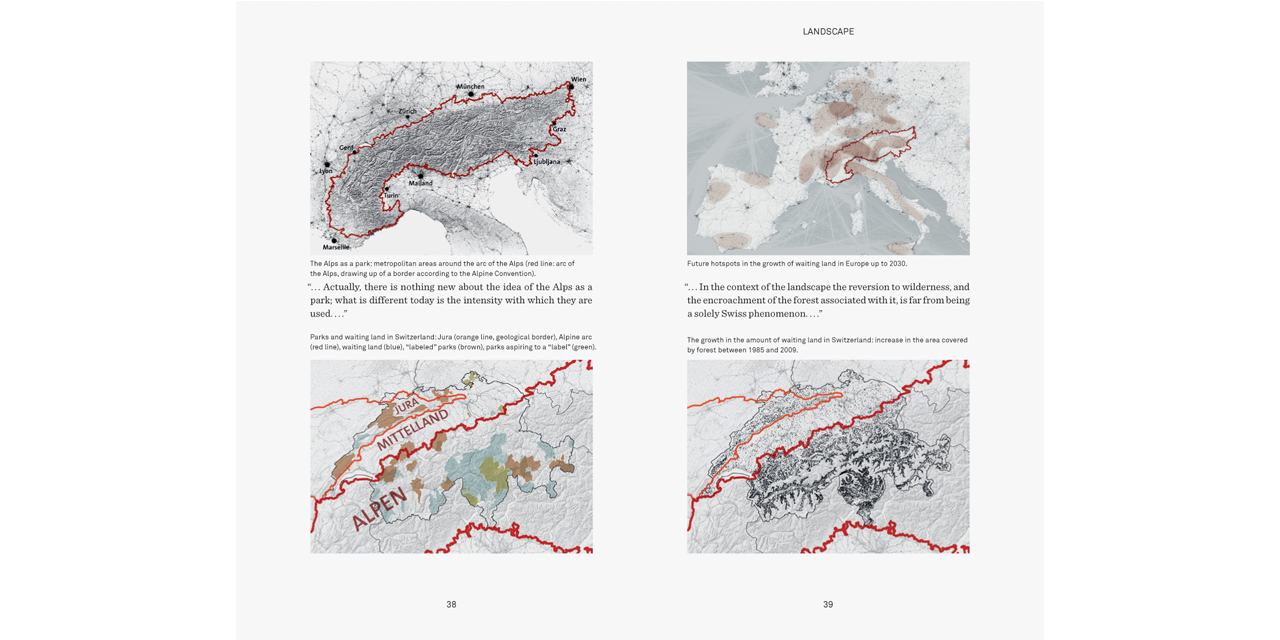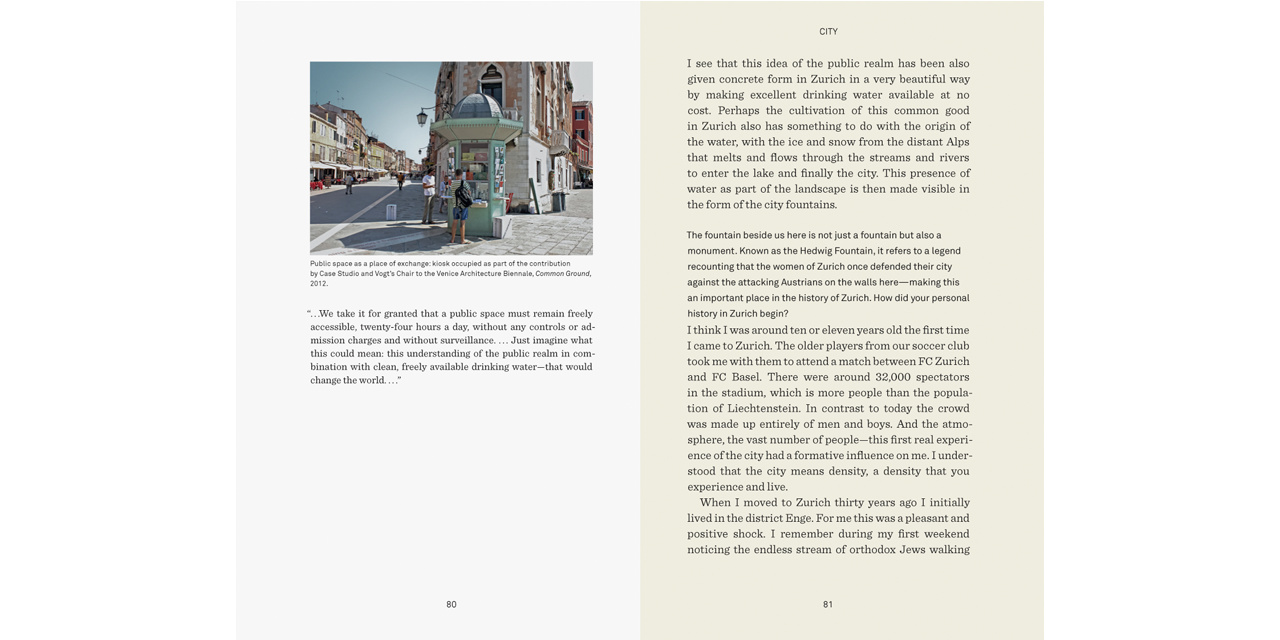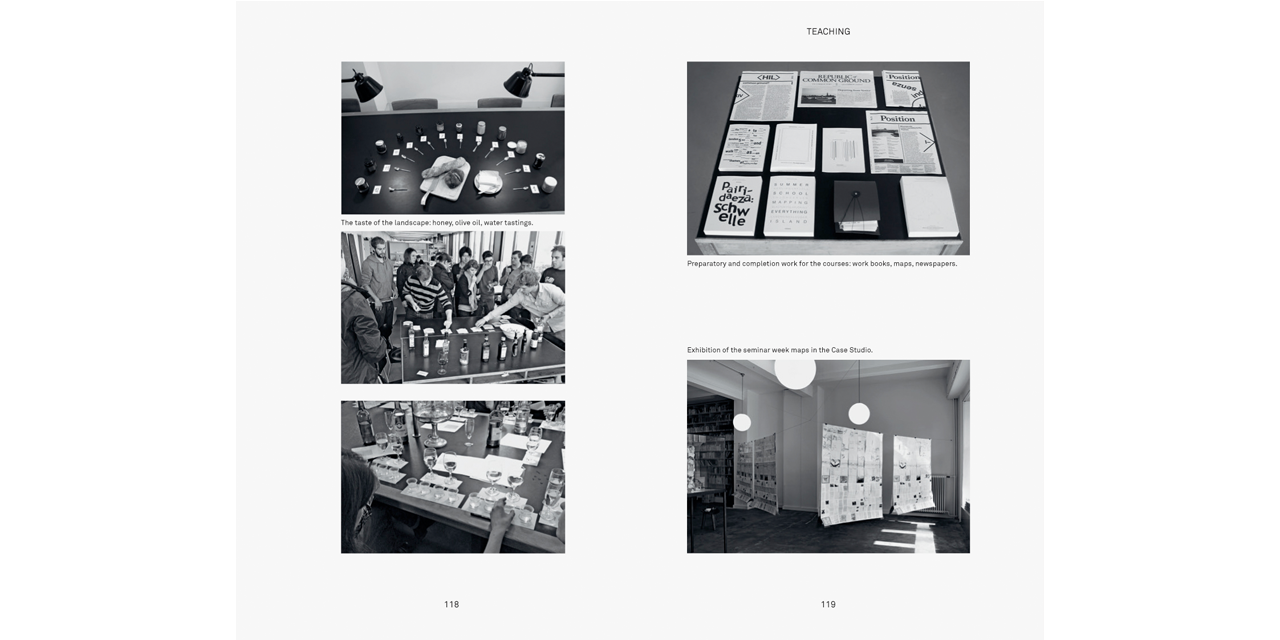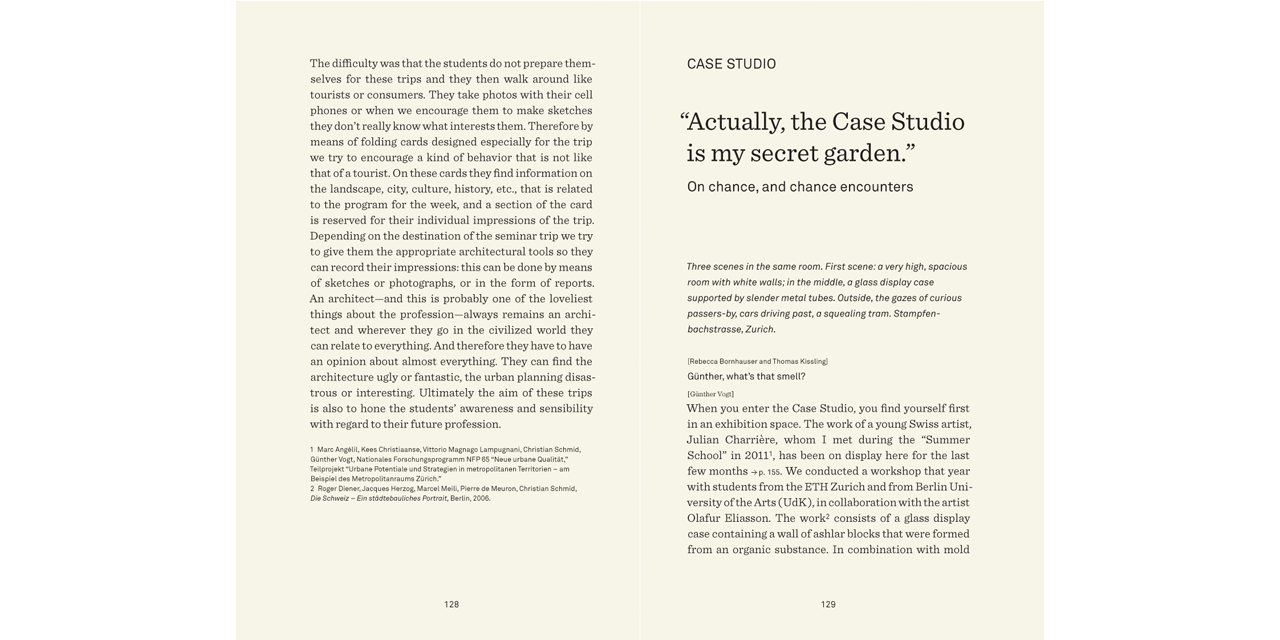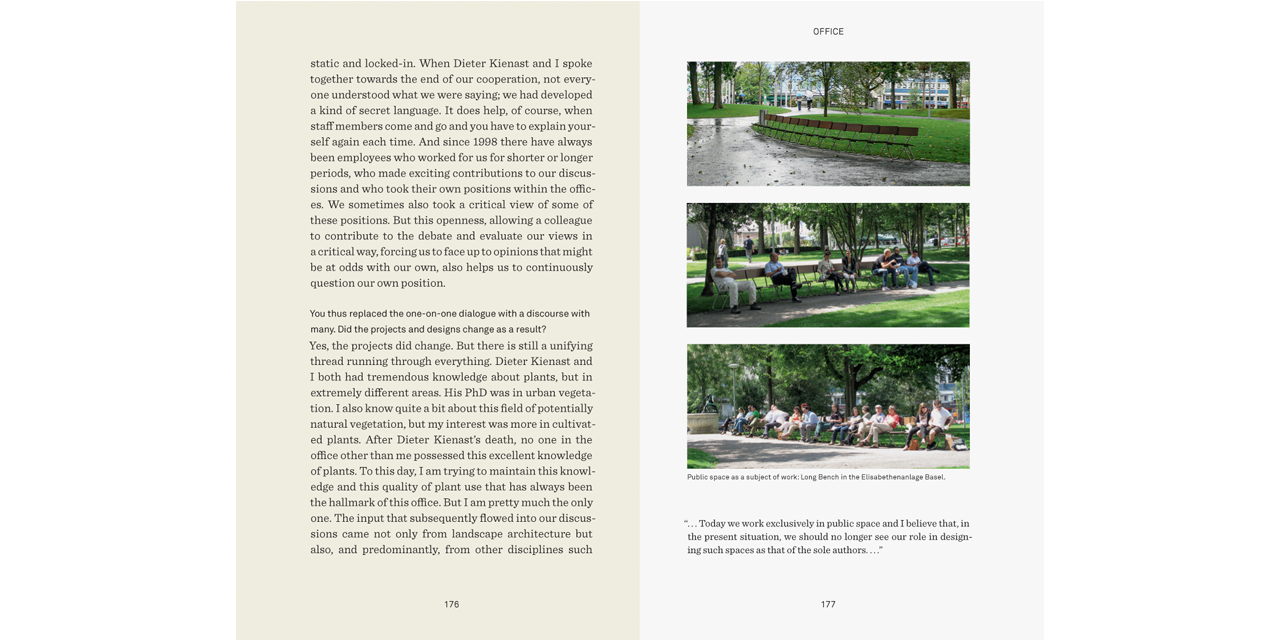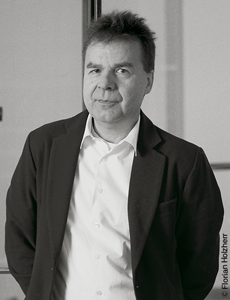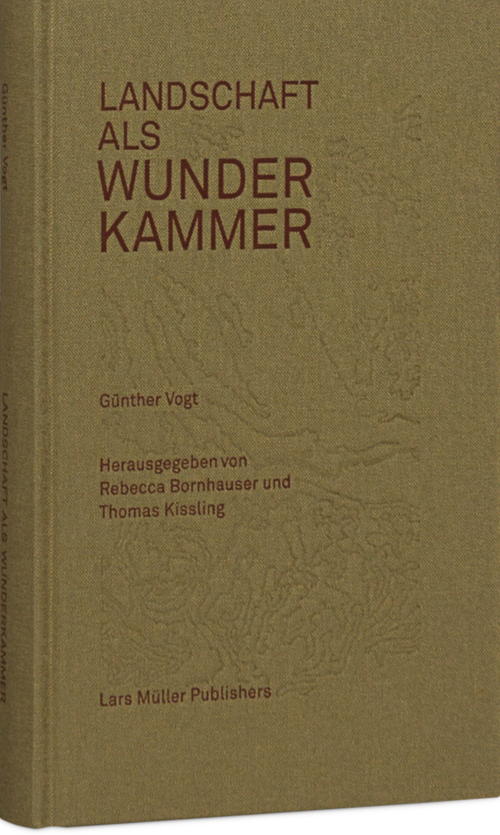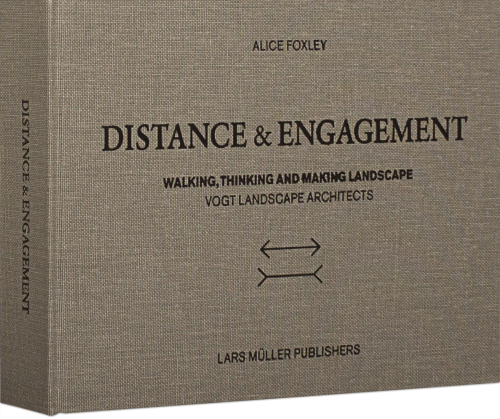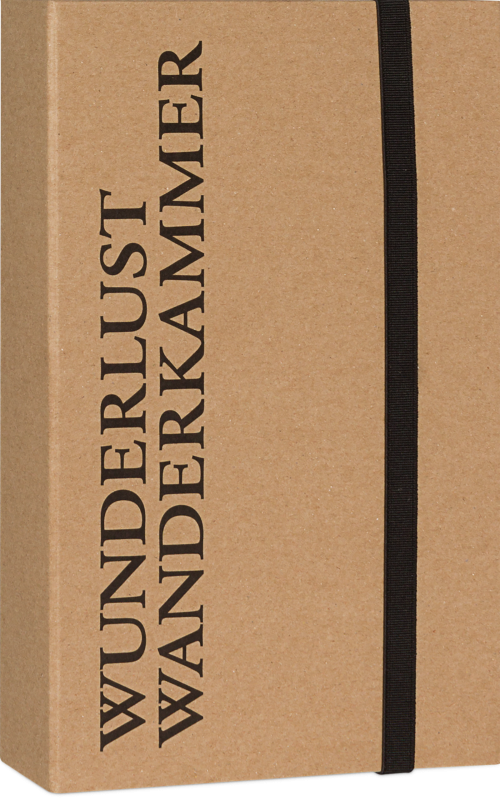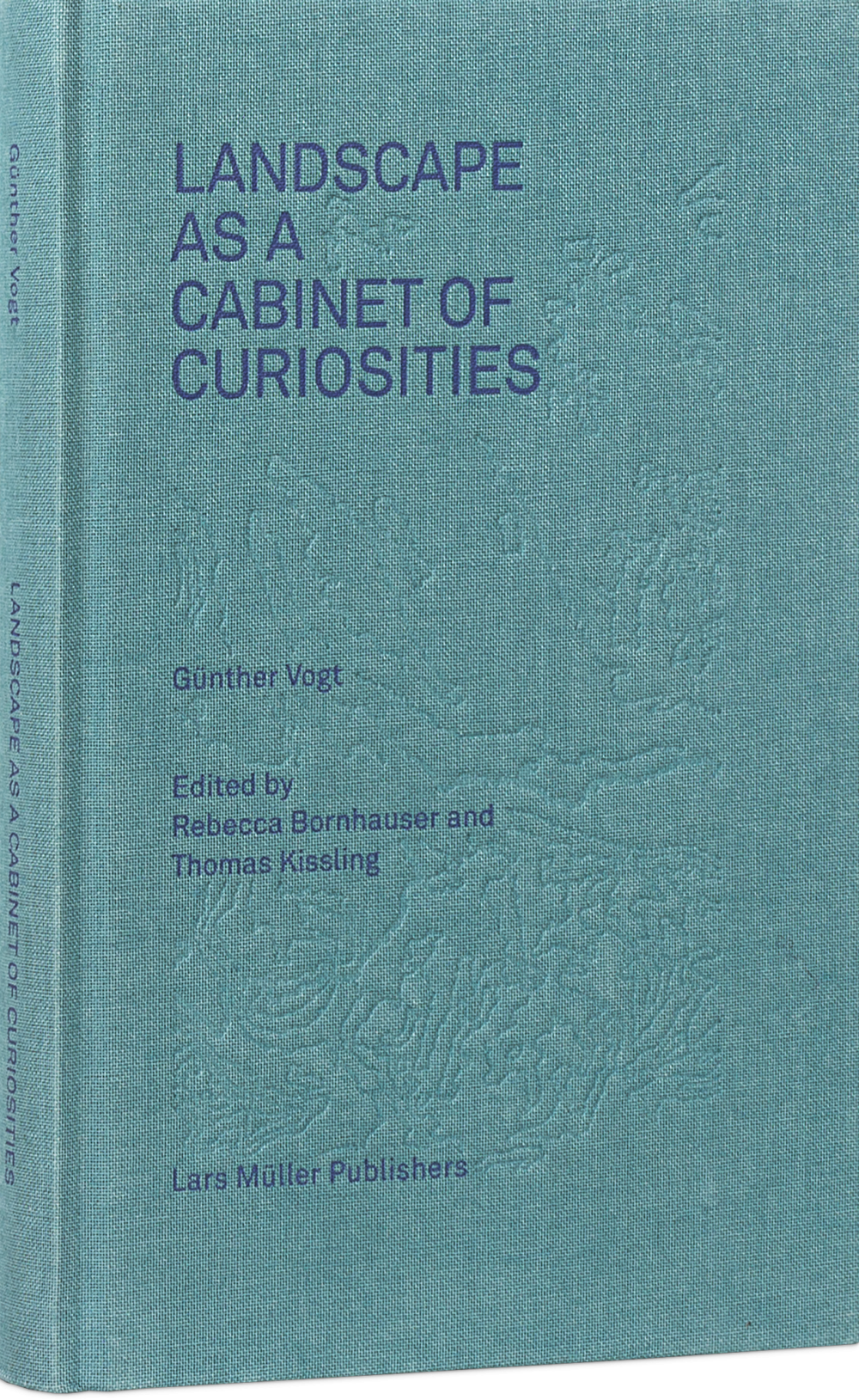
Landscape as a Cabinet of Curiosities
If there is no such thing as nature as a whole, perhaps there is landscape as a cabinet of curiosities. Thereby, in the best of cases, this lack of wholeness seems to be a gain rather than a loss. What is required for this kind of reinterpretation is an attentive observer who collects the various phenomena as individual elements, relates them to each other and rearranges them. Günther Vogt is one such collector, and his cabinet of curiosities can reveal both landscapes and his approach to them.
With reference to five different locations, Günther Vogt speaks about current themes of landscape architecture and its relationship to architecture and the city, about his teaching at the ETH Zurich, and about the work of Vogt Landscape Architects. This book can, in a way, itself be read as a cabinet of curiosities, for it offers an insight into the complex cosmos of Günther Vogt’s thought and work, and ultimately asks about a position.
If there is no such thing as nature as a whole, perhaps there is landscape as a cabinet of curiosities. Thereby, in the best of cases, this lack of wholeness seems to be a gain rather than a loss. What is required for this kind of reinterpretation is an attentive observer who collects the various phenomena as individual elements, relates them to each other and rearranges them. Günther Vogt is one such collector, and his cabinet of curiosities can reveal both landscapes and his approach to them.
With reference to five different locations, Günther Vogt speaks about current themes of landscape architecture and its relationship to architecture and the city, about his teaching at the ETH Zurich, and about the work of Vogt Landscape Architects. This book can, in a way, itself be read as a cabinet of curiosities, for it offers an insight into the complex cosmos of Günther Vogt’s thought and work, and ultimately asks about a position.
English edition – also available in German
